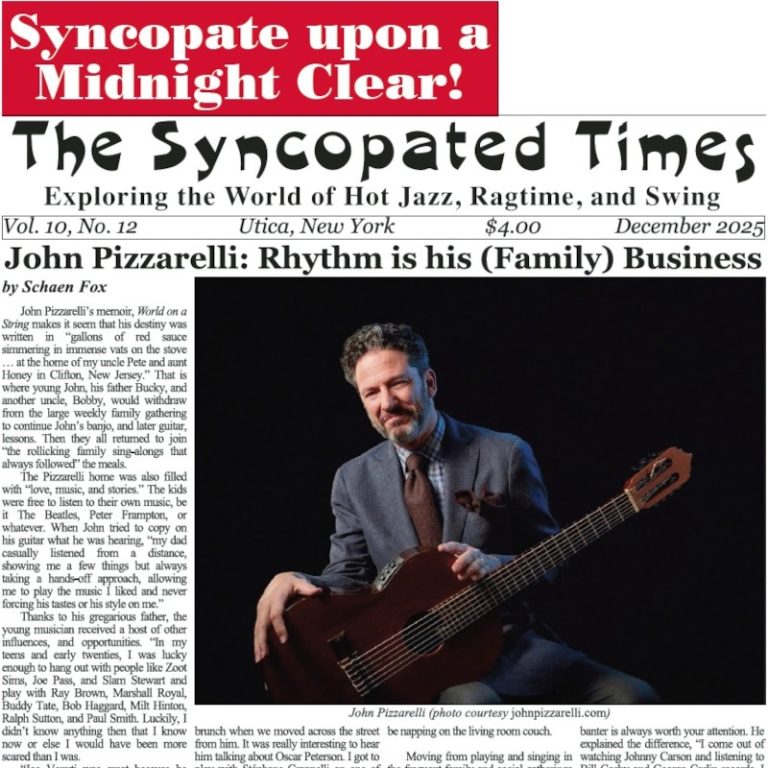In my opinion, King Oliver doesn’t really receive the credit he is due. He’s all too often treated as a “stop along the way” for Louis Armstrong. Truth be told, he was almost like a father to Louis, and taught him a great deal about playing the cornet. (Louis almost always referred to him as “Papa Joe.”) I’ve just been reading one of the interviews available online from the Hogan Jazz Archive at Tulane University in New Orleans—an interview with Oliver’s wife Stella.
She stated Louis would frequently come to their houses, both in New Orleans and Chicago, for lessons and to eat. Joe was a big man who liked to eat and enjoyed seeing others enjoy their food. Mrs. Oliver mentions Joe knew Buddy Bolden, said he was a fine “faker” (a later term would be “jazzer”) but couldn’t read, which Joe felt was important.
The band Oliver had in New Orleans played dances at Tulane University, and undoubtedly they must have been very good to have had the chance to do that. They would’ve played all kinds of popular tunes, including waltzes, for dancing. However, according to first hand reports, as the evenings wound down, the band would leave the waltzes behind and slow things down with the blues.
It’s funny how certain events in a person’s life can change the course, which happened with Oliver when he was arrested in 1918—along with the rest of his band and the aud
You've read three articles this month! That makes you one of a rare breed, the true jazz fan!
The Syncopated Times is a monthly publication covering traditional jazz, ragtime and swing. We have the best historic content anywhere, and are the only American publication covering artists and bands currently playing Hot Jazz, Vintage Swing, or Ragtime. Our writers are legends themselves, paid to bring you the best coverage possible. Advertising will never be enough to keep these stories coming, we need your SUBSCRIPTION. Get unlimited access for $30 a year or $50 for two.
Not ready to pay for jazz yet? Register a Free Account for two weeks of unlimited access without nags or pop ups.
Already Registered? Log In
If you shouldn't be seeing this because you already logged in try refreshing the page.




